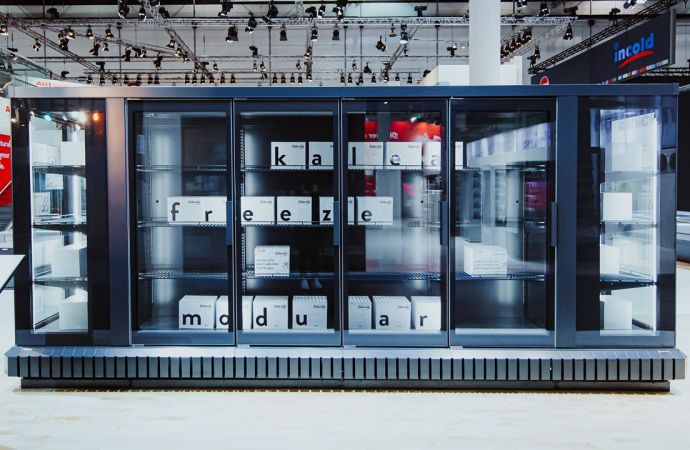Trade group also wants to change CARB’s definition of new equipment so that it doesn’t impact retrofits, and seeks stakeholder input.

Lauren MacGowens, AHRI, speaking at the FMI Energy & Store Development Conference on September 10.
The Air-Conditioning, Heating, and Refrigeration Institute (AHRI), based in Arlington, Va., last Friday submitted an updated proposal to the California Air Resources Board (CARB) asking for a deadline extension and other changes in CARB's proposed refrigeration regulations on GWP limits for refrigerants in commercial refrigeration.
AHRI believes the regulations would be burdensome to HVAC&R end users.
These regulations – expected to influence the regulatory direction of other states – include a 150GWP cap on refrigerants used in new systems with more than 50lbs of refrigerants by January 1, 2022, as well as a ban on the sale of virgin refrigerants with a GWP above 1,500 by that date. CARB has also proposed a 750GWP cap for new stationary air conditioning systems by January 1, 2023. The agency plans to submit a final ruling to its board in May 2020.
AHRI is asking for a “two-step approach, which gives us a bit more time to comply with current regulations,” said Lauren MacGowens, Sector Lead – Refrigeration Technology for AHRI, in a presentation at the Food Marketing Institute’s Energy & Store Development Conference in Dallas, Texas, U.S. on September 10. AHRI also wants more time in order to “get safety standards in place so A2L and A3 refrigerants can safely be used in these applications,” she said.
Under its two-step approach, AHRI is asking, according to her FMI presentation, that medium-size commercial refrigeration units with between 50 and 300lbs of refrigerant be capped at 1,500GWP in 2021 but not capped at 150GWP until 2024, contingent on the adoption of safety standards in the California State Code.
In its updated proposal, AHRI is recommending that new remote condensing units and those used in new construction, with 50-300lbs of refrigerant, have a GWP cap of 1,500 in 2021, and a 300 (as opposed to 150) GWP for 2024. AHRI argues that a 150 GWP cap for condensing units would preclude all synthetic refrigerants and allow only CO2 refrigerant; but the trade group said CO2 condensing units are not a practical option in the U.S. due to higher costs for energy-efficient models and an inadequate supply chain for components.
CO2 condensing units are widely used in Japan and are entering the European market; in the U.S. Efficiency Vermont, a utility, is planning to test CO2 condensing units.
MacGowens asked the FMI conference audience for input on CARB’s proposals and their potential impact on the commercial refrigeration market. “CARB continues to think that ammonia and CO2 options will be viable for all new stores and retrofit and replacement applications as well. We do not agree,” she said. “The industry voice must be heard and we need your help.”
AHRI, she added, wants to see “an industry-driven change with viable options that meet the needs of all of our customers without straining equipment or putting stores out of business.” CARB’s position is that it needs aggressive GWP caps and timelines in order to meet its statutory requirement to cut HFC emissions by 40% below 2013 levels by 2030.
AHRI is also focused on CARB’s definition of the new equipment to which the new GWP limits would apply. The definition encompasses not only new stores but also existing stores where equipment is modified to handle an expanded cooling load, or where equipment is replaced in whole or replaced in part such that the cost of components exceeds 50% of the cost of replacing an entire system.
AHRI is concerned that, under this definition, equipment replacement “could mean changing entire stores long before they are due for a retrofit, as well as looking at under-150GWP options “much sooner than equipment life span,” MacGowens said. As a result,
In its new proposal to CARB, AHRI said that retrofit, maintenance and replacement of equipment components “cannot be done for all applications given the current equipment limitations and restrictions of safety codes and standards.”
Read this article in its entirety in the October 2019 issue of Accelerate Magazine.
A two-step approach ... gives us a bit more time to comply with current regulations." – Lauren MacGowens, AHRI
Related stories



